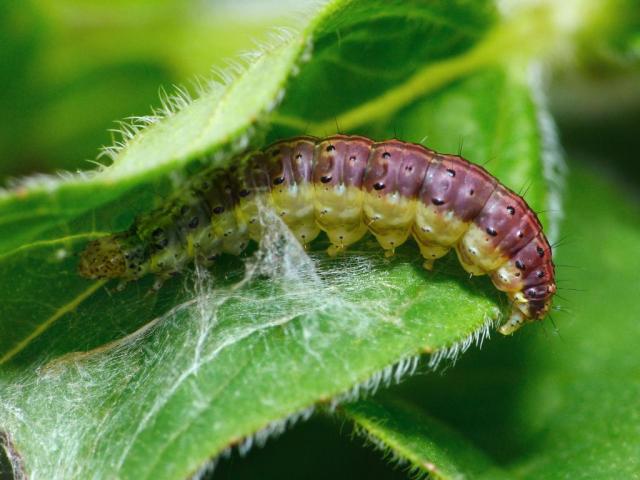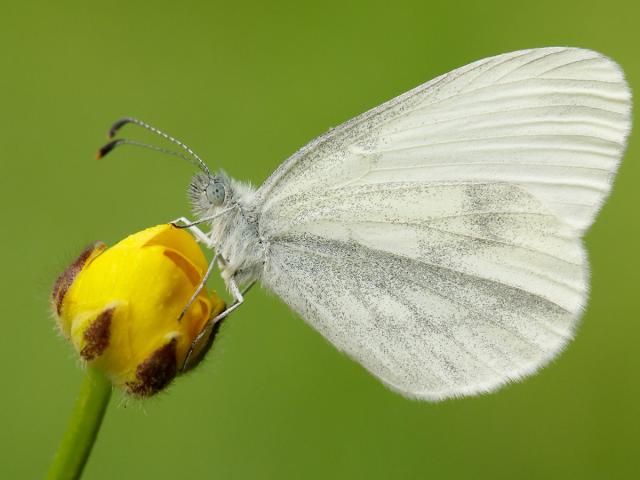Anthony McCluskey, Wild Spaces Project Officer, shares tips on creating an edible garden to create food for butterflies and moths while feeding yourselves too.
Being able to grow your own food is one of the most rewarding things about gardening. Even if it’s just a few herbs to make tea or a salad, growing your own is a great thing to do. And while you’re at it, you can provide food for butterflies and moths!
It’s useful to remember what adult butterflies and moths need. Most species drink nectar, which gives them energy to fly around. Many of the easiest culinary herbs to grow are rich in nectar. Top of my list are thyme (my favourites are the ‘citrus’ thymes), rosemary and oregano (also called marjoram). These herbs are all great for pots, planters and even window boxes and balconies as they all cope well or even thrive with drier conditions. If you’ve got a larger planter or a herb bed in the garden, mint is a great choice. I’ve got about seven different varieties of mint, including chocolate, pineapple, apple, peppermint, Moroccan and even orange mint! These all flower in late summer, and are usually covered in butterflies and bees. I tend to use the mint leaves fresh in salads through the summer, and from July onwards I will pick whole stems and dry the out of a radiator or on a windowsill – this way I preserve the leaves to make enough mint tea to last me the whole year! Just put the dry leaves in an airtight container once they’re dry and they will keep for months. One word of caution with mint is that this plant likes to spread itself around the garden and can be a bit too vigorous. So it’s best grown in a larger planter, or in a pot sunk into the ground to keep the roots in.
While we’re talking about mint, it’s worth mentioning a moth that loves it too – the Mint Moth! Caterpillars of Mint Moths eat Mint, Oregano or Thyme. Mint Moths are found commonly in herb gardens in England and Wales, but are less common in Scotland. They have two generations per year, so you’ll see the adults flying right through the spring and summer, with their distinctive purple and gold patterned wings. Their caterpillars rarely do enough damage to plants to cause harm, but it’s good to know what to look for so you don’t end up eating one yourself! Caterpillars are green with many black dots along their bodies, and they turn purple as they get older. They also make a fine silk web to tie leaves together into a protective shelter. The caterpillars make their cocoons on the plant, so if you’re harvesting mint and see any cocoons it’s best to leave those stems, or just pick the unaffected leaves instead of whole stems.

Plants in the brassica family (like cabbage, kale and broccoli) are usually grown and picked in the same year. But did you know that these plants often produce masses of bright yellow flowers in their second years? These flowers are incredibly attractive to insects like butterflies and moths, and for this reason I always leave old kale and other brassicas in the ground after their leaves have become too tough and bitter to eat. The same goes for old parsley and coriander plants – once they start to produce flowers their leaves become less tasty, but I just leave them to flower and know that some of the smaller moths will find sustenance on their tiny flowers.
A very easy salad plant to grow is Nasturtium. We’ve talked about the value of this plant many times, but it bears repeating as it’s such as useful plant. You can grow them easily from seeds, and put them into flower beds, pots, planters and even hanging baskets in sunny positions. Caterpillars of white butterflies and some moths will eat the leaves, but you can easily spot them and avoid them when you pick the leaves (and flowers) for salads. They add a really spicy, mustardy kick!

With Wild Spaces, we are encouraging people to provide nectar, caterpillar food and places to overwinter or make a cocoon (summarised as ‘feed, breed and shelter’). To help with the ‘shelter’ aspect, you can leave plants to die back naturally in winter. Many species will spend the winter as caterpillars in the soil or among dead leaves, so try not to disturb your growing place too much or clear away fallen leaves; and remember that even when we can’t see them, they’re still there!
Find out more about Wild Spaces and get growing tips at our Wild Spaces webpage.


